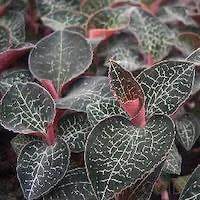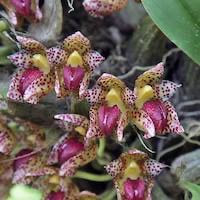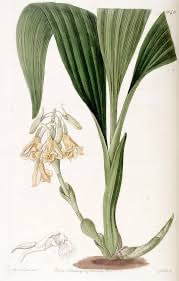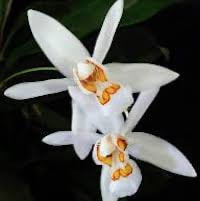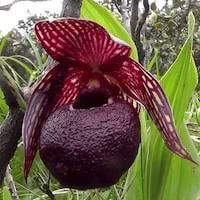Unveil the Fresh 8 Women Fragrance Oil Experience
This oil contains native Singaporean Orchid notes: Anoectochilus formosanus Hayata, Bulbophyllum leopardinum, Calanthe densiflora Lindl., Coelogyne corymbosa Lindl. syn Pleione corymbosa (Lindl) Kuntze, and Cypripedium tibeticum King ex Rolfe syn. Cypripedium corrugatum Franch. are orchid species with distinctive scented notes and potential therapeutic benefits.
Anoectochilus formosanus Hayata, known as gold thread orchid, is used in Traditional Chinese Medicine (TCM) for its cooling properties, blood circulation promotion, and detoxification. It is employed in the treatment of various conditions such as tuberculosis, diabetes, bronchitis, infections, cramps, and stomachaches. The plant is also used for pain relief and addresses issues like waist and knee pain, numbness, haematemesis, nocturnal emission, nephritis, vaginal discharge, and convulsions in children. It contains several compounds with unique benefits, including quercetin, isorhamnetin, and kaempferol derivatives.
Bulbophyllum leopardinum, or Duantingshiduo Lan, is found in Nepal, Bhutan, India, and China. It is used to treat burns on the skin, with its pseudobulbs being utilized for poultices. This orchid contains phenenthrine and bulbophyllanthrin as active compounds, contributing to its therapeutic properties.
Calanthe densiflora Lindl., also known as Zhuyegenjie Lan or Mihuaxiaji Lan, is a terrestrial orchid found in the southern Himalayas, China, Indochina, and Japan. In Taiwanese Chinese herbal medicine, it is used to improve blood circulation, reduce blood stasis and swellings, remove gas and humidity, and alleviate conditions such as rheumatism, backache, pain in the lower limbs, running sores, and traumatic injuries.
Coelogyne corymbosa Lindl. syn Pleione corymbosa (Lindl) Kuntze, known by various Chinese names, is utilized for treating fractures and soft tissue injuries. It possesses hemostatic and pain-relieving properties and can help reduce heat, relieve coughs, and address conditions like the flu and bronchitis.
Cypripedium tibeticum King ex Rolfe syn. Cypripedium corrugatum Franch., or Tibetan scoop orchid, is known for its medicinal usage. The roots of this orchid, collected from Yunnan, have anti-inflammatory properties and can alleviate pain, increase urine output, relieve painful swellings, improve blood circulation, and treat menstrual disorders.
These orchids not only contribute to the scented notes of fragrance formulations but also offer potential therapeutic benefits based on traditional practices and scientific research.
Anoectochilus formosanus Hayata, known as gold thread orchid, is used in Traditional Chinese Medicine (TCM) for its cooling properties, blood circulation promotion, and detoxification. It is employed in the treatment of various conditions such as tuberculosis, diabetes, bronchitis, infections, cramps, and stomachaches. The plant is also used for pain relief and addresses issues like waist and knee pain, numbness, haematemesis, nocturnal emission, nephritis, vaginal discharge, and convulsions in children. It contains several compounds with unique benefits, including quercetin, isorhamnetin, and kaempferol derivatives.
Bulbophyllum leopardinum, or Duantingshiduo Lan, is found in Nepal, Bhutan, India, and China. It is used to treat burns on the skin, with its pseudobulbs being utilized for poultices. This orchid contains phenenthrine and bulbophyllanthrin as active compounds, contributing to its therapeutic properties.
Calanthe densiflora Lindl., also known as Zhuyegenjie Lan or Mihuaxiaji Lan, is a terrestrial orchid found in the southern Himalayas, China, Indochina, and Japan. In Taiwanese Chinese herbal medicine, it is used to improve blood circulation, reduce blood stasis and swellings, remove gas and humidity, and alleviate conditions such as rheumatism, backache, pain in the lower limbs, running sores, and traumatic injuries.
Coelogyne corymbosa Lindl. syn Pleione corymbosa (Lindl) Kuntze, known by various Chinese names, is utilized for treating fractures and soft tissue injuries. It possesses hemostatic and pain-relieving properties and can help reduce heat, relieve coughs, and address conditions like the flu and bronchitis.
Cypripedium tibeticum King ex Rolfe syn. Cypripedium corrugatum Franch., or Tibetan scoop orchid, is known for its medicinal usage. The roots of this orchid, collected from Yunnan, have anti-inflammatory properties and can alleviate pain, increase urine output, relieve painful swellings, improve blood circulation, and treat menstrual disorders.
These orchids not only contribute to the scented notes of fragrance formulations but also offer potential therapeutic benefits based on traditional practices and scientific research.
Download the guided mediation that works best with this Orchid fragrance oil
| women_fresh_essential_oil_orchi_00008.mp3 | |
| File Size: | 154709 kb |
| File Type: | mp3 |
Elevate Your Senses with Orchid-Infused Aromatherapy
Contains Scented Notes of following in various proportions:
Native Singaporean Orchid notes: Anoectochilus formosanus Hayata
|
Anoectochilus formosanus Hayata
Anoectochilus formosanus Hayata, also known as gold thread orchid, has various Chinese names such as Jinxian Lan, Benshanshisong, Jinqianzicao, Shucan Lian, Yaowang, Yaofu, Wusen, and Taiwan jewel orchid. It is naturally found in Taiwan's primeval forests and bamboo stands at elevations between 500 and 1500 meters, as well as in the Ryukyu Islands. In Traditional Chinese Medicine (TCM), the entire plant is utilized for its cooling properties, liver-smoothing effects, antipyretic properties, and detoxification. It is employed in treating conditions such as tuberculosis, diabetes, bronchitis, kidney and bladder infections, cramps, snake bites, and stomachaches. Anoectochilus formosanus is also used for pain relief in the waist and knee areas, addressing numbness, haematemesis, nocturnal emission, nephritis, vaginal discharge, and convulsions in children. Scientists in China have identified eight compounds in Anoectochilus formosanus with unique benefits, including quercetin-7-o-beta-D-(600-o-(trans-feruloyl))-glucopyranoside, 8-C-p-hydroxybenzylquercetin, isorhamnetin-7-0-beta-D-glucopyranoside, isorhamnetin-3-0-beta-D-glycopyranoside, kaempferol-3-0-beta-D-glucopyranoside, kaempferol-7-0-beta-D-glucopyranoside, 5-hydroxy-30,40,7-trimethoxyflavonol-3-0-beta-D-rutinoside, and isorhamnetin-3-0-beta-D-rutinoside. These compounds contribute to the plant's therapeutic properties. Researchers in Tokyo have further discovered ten compounds, including kinsenoside, in wild-grown Anoectochilus formosanus. Kinsenoside is known for its hepatoprotective properties. Other compounds found in the orchid include beta-D-glucopyranosyl-(3R)-hydroxybutanolide, stearic acid, palmatic acid, betasitosterol, succinic acid, p-hydroxybenzaldehye, daucosterol, methyl 4 beta glucopyranosyl-hutanoate, p-hydroxy cinnamic acid, and 0-hydroxy phenol. These compounds contribute to the unique scented notes and potential therapeutic benefits of Anoectochilus formosanus Hayata in fragrance formulations. |
Therapeutic Orchid notes:
|
Bulbophyllum leopardinum
Chinese name: Duantingshiduo Lan Bulbophyllum leopardinum, known as Duantingshiduo Lan in Chinese, is a widely distributed orchid species found in Nepal, Bhutan, India, and China. In Nepal, it is specifically utilized for its medicinal properties. The pseudobulbs of this orchid are used to create poultices that are applied to treat burns on the skin. Bulbophyllum leopardinum contains active compounds such as phenenthrine and bulbophyllanthrin, which contribute to its therapeutic properties. These compounds likely play a role in the orchid's ability to provide relief and healing for burns when used in poultice form. |
|
Calanthe densiflora Lindl.
Chinese name: Zhuyegenjie Lan (bamboo leaf segmented root orchid), Mihuaxiaji Lan (prawn spine flower orchid) Calanthe densiflora Lindl., also known as Zhuyegenjie Lan or Mihuaxiaji Lan in Chinese, is a terrestrial herb found in shaded hardwood forests in the southern Himalayas, China, Indochina, and Japan. In Taiwan, it can be found below 1500 meters throughout the island. It is recognized as the last Calanthe species to flower in Taiwan, typically blooming from October to December. In Taiwanese Chinese herbal medicine, the whole plant of Calanthe densiflora is utilized for its therapeutic properties. It is believed to improve blood circulation, reduce stasis of blood, and alleviate swellings. Additionally, it is used to relieve gas and humidity in the body. The herb is commonly employed to treat conditions such as rheumatism, backache, pain in the lower limbs, running sores, and traumatic injuries. |
|
Coelogyne corymbosa Lindl. syn Pleione corymbosa (Lindl) Kuntze
Chinese name: Yanbanbeimu Lan (eye spotted pearl shell orchid), Beimu Lan (pearl shell orchid), Zhixueguo (haemostatic fruit); Shibajiao (stone palm leaves); Duiyeguo (fruit with a pair of leaves); Xiaoluji (small green Chinese elder) Chinese medicinal name: Beimu Lan (pearl shell orchid); Guoshangye (leaves above the fruit) Newari name: Tuyu kenbu swan Coelogyne corymbosa Lindl., also known as Pleione corymbosa, has various names in Chinese, including Yanbanbeimu Lan, Beimu Lan, Zhixueguo, Shibajiao, Duiyeguo, and Xiaoluji. It is also referred to as "eye spotted pearl shell orchid" and "pearl shell orchid" in English. In Chinese medicine, it is known as "Beimu Lan" (pearl shell orchid) and "Guoshangye" (leaves above the fruit), while in the Newari language, it is called "Tuyu kenbu swan." This herb is obtained from Yunnan and Xizang and can be collected at any time of the year. The pseudobulbs or the entire plant of Coelogyne corymbosa are used for their medicinal properties. It is particularly employed in the treatment of fractures and soft tissue injuries. The herb acts as a hemostatic agent and helps relieve pain. It also has cooling properties and is used to reduce heat, stop coughs, and treat conditions such as the flu and bronchitis. Several common prescriptions are available for different ailments:
|
|
Cypripedium tibeticum King ex Rolfe syn. Cypripedium corrugatum Franch.
Chinese name: Xizang Zhuolan (Tibetan scoop orchid) Chinese medicinal name: Wugongqi; Zhoushao Lan (crepe spoon orchid) Cypripedium tibeticum, also known as Tibetan scoop orchid, has various names in Chinese, including Xizang Zhuolan and Wugongqi. In Chinese medicine, it is referred to as Zhoushao Lan or crepe spoon orchid. This orchid species flowers from May to August and is commonly found in open forests, as well as on grassy or rocky slopes. The herb is collected from Yunnan and its roots are highly valued for their medicinal properties. The roots of Cypripedium tibeticum are believed to possess anti-inflammatory properties and have the ability to alleviate pain. They are used to increase urine output, relieve painful swellings, improve blood circulation, and treat menstrual disorders. Cypripedium species, including Cypripedium tibeticum, have garnered attention from taxonomists, gardeners, and biochemists due to their unique characteristics. In Western medicine, Cypripedium has been historically used for medicinal purposes in Europe and North America. Native American Indians utilized the roots of Cypripedium species as sedatives and antispasmodics. In the United States, extracts from these plants were used to treat nerve disorders and occasionally employed as an aphrodisiac. Similarly, in historical Indian medicine, Cypripedium species were utilized to address various nervous system disorders, including hysteria, spasms, fits, madness, and epilepsy. Chinese herbalists also employ Cypripedium species to treat malaria. Overall, Cypripedium tibeticum holds significance in traditional medicine for its potential therapeutic properties, particularly in treating inflammatory conditions, pain, and menstrual disorders. It has a rich historical background of use in various traditional medical systems across different regions of the world. |
Other scent note
Cactus, Ivy, Tobacco leaf, Sage, Vine, Tobacco, Ginkgo, Violet leaf, Juniper, Wintergreen, Lemongrass, Eucalyptus
Scentopia Library Reference ingredient
Fennel- Check details at Scentopia's scent library
Join Scentopia's wonderful orchid scent crafting, fragrance tour, bridal shower or corporate team building which includes perfume making onsite and offsite, beach activities and more. We also serve primary school learning journey, secondary students and pupil on industrial excursions. Know more about our orchids perfume bar or therapeutic orchid scents and other wellness aromas. Conatct Perfume workshop or book a scent crafting session here.
